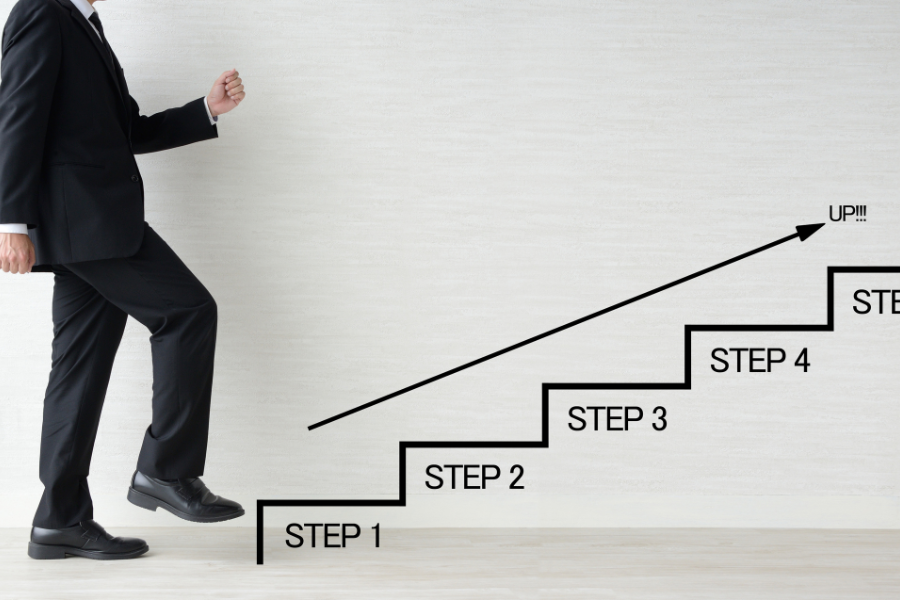Eight steps to evolve S&OP into IBP

If your company is running a robust S&OP process, then this short article should be worth reading. If not, then you may want to stop and focus on the basics first: realise short and midterm demand-supply balancing based on a demand planning process that delivers solid results. In this case you are still in good company by the way, as many companies still have work to do here.
Once S&OP is in place and consistently delivers on its promises, it is time to initiate the next step: evolve into Integrated Business Planning (IBP). IBP or ”One plan to run the business” is seen by many as the holy grail, but there are different views on what it really entails and what it takes to get there. This article gives a high level overview of what we believe are the main elements or IBP building blocks that you should consider.
Building block 1: think end-to-end
IBP is a decision making process that seeks to optimise business performance. But what scope do you have in mind? Are you maximising the gross margin of your local operating company? Or will you also include the impact of your decisions on your internal factories? Or on your external vendors? Will you share or discuss you plans with them as -to-end well? And what about your customers? Will you consider or discuss their forecasts in your process? And will you be looking to optimise value for them as well?
Building block 2: think value
A typical S&OP process is volume driven. Cost will surely play a role to a more or lesser extent, but the focus will be on defining and enabling the volume plan. Can we serve our customers, do we have enough resources, should we pre-build stocks, are we confident that all critical raw materials will be available, …? This is useful and must be maintained, but when moving to IBP trade-off decisions will be based on value rather than on volume.
Building block 3: cash-up the demand plan
Converting the demand plan into value is not an objective in itself, but it is an essential enabler when moving towards one plan for the business. From a technical perspective, this is often the biggest challenge. How accurate does the conversion have to be and at what level of detail? Will you go to customer level, include price-offs, represent off-invoice bonuses, …? And if so, what about confidentiality? Do you require interaction and therefore have to do the cash-up in your planning system, or does it suffice to solve this via reporting? The way to answer these questions is to start with the end in mind: what are you going to use the value plan for and what decisions will it support?
Building block 4: speak the same language
“Simply” converting the demand plan into value in most cases will not suffice. If you are serious about “one plan for the business”, you really need to start speaking the same language. This can mean that the way data gets sliced and diced in S&OP must change. Supply Chain, Finance, Marketing and Sales may all be looking at the world through different lenses. This must be resolved somehow, meaning that product and customer hierarchies may have to be harmonised across functions, brands may have to be represented in supply chain planning, etc. For some companies this will be a non-issue, but for others it can be a major challenge.
Building block 5: financialize your scenarios
Scenario planning is on the rise. Modern tools are getting better at supporting scenario analysis, enabling more data driven decisions. Defining and analysing different options is a powerful way to get to better decisions, but how do you evaluate different scenarios? In many cases, more than one aspect will need to be considered. What is the impact on service levels, are all customers equally important to you, what is the cost of each option and what additional value will it deliver? In IBP, value will play a bigger role and therefore, scenarios will have to be financialised.
Building block 6: IBP Dashboard
“What you don’t measure you cannot improve.” In any process, KPIs combined with a disciplined PDCA cycle will help drive continuous improvement. When moving from S&OP to IBP, the KPIs and therefore the IBP Dashboard will most likely have to change. Again, value will be higher on the list. Since there can be only be so many Key Performance Indicators, you cannot simply add KPIs to your existing S&OP Dashboard. Re-defining your dashboard therefore must be one of the design steps. Unavoidably, the underlying question of what the main reasons are for implementing IBP will be on the table here.
Building block 7: Merge your planning cycles
Traditionally, the financial planning cycle in any serious business is well established. Defining budgets, running quarterly financial updates and monthly MBR’s including financial outlooks happen in virtually any company. The idea that IBP will be “the way we run our business” suggests that a financialised S&OP process will replace the financial planning cycle. Really? Imagine the other way around, where Finance would propose to take-over S&OP? Unlikely, right? But if that is not the vision, then what is? How do we combine these two tactical planning processes into one logical process without one taking over the other? Next to logical and technical challenges that need to be addressed, this step typically requires the biggest change management effort as well.
Building block 8: financialize your S&OE
A process that is often forgotten in an IBP initiative is the short term planning process: Sales & Operations Execution or S&OE. But in the general move from volume to value, S&OE should not be ignored. Again, scenario analysis will play a role here and again, these scenarios will have to be monetised. But what is short term value exactly, and what costs and revenues can really be influenced in the short term? Should factory coverage be considered or ignored? What about hourly line rates? These include fixed costs that cannot be changed in the short term anyway, right? So include them or not? Again, defining what KPIs will be optimised in S&OE and therefore, what KPIs will be used to evaluate scenarios, will need to be part of your design effort.
Wrap-up
Are these eight building blocks the be all and end all of getting to IBP? Nowhere near of course, as they only touch upon a number of common aspects that need to be considered. As always, the devil is in the detail, and this will only become apparent once you take the bold decision to start evolving towards IBP. Any business is unique and will need a tailored IBP process. And we have not even started considering the change management aspects, that may offer even bigger challenges than the logical and technical aspects introduced in this article. But hopefully it gives food for thought, and a good starting point for the next article in this series!



